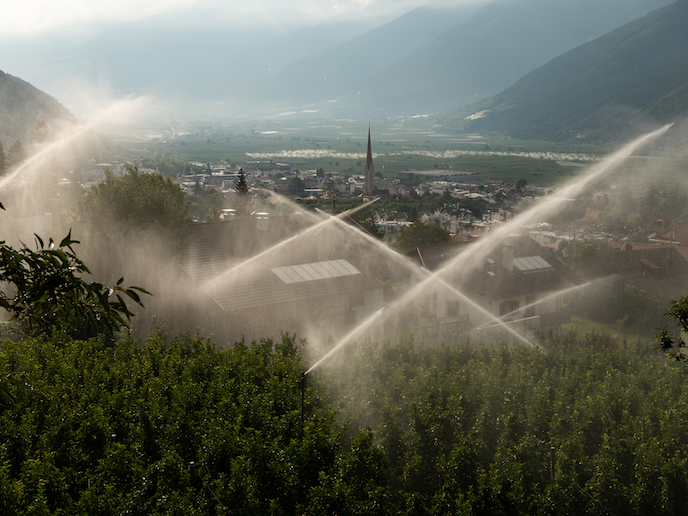Smart irrigation reduces water wastage
Europe’s agriculture sector is responsible for around 24 % of global fresh water use, but a large amount of this precious resource is wasted through inefficiencies. The need to conserve water has become more urgent as climate change could lead to water scarcity in future. The EU-funded ELEKTRORAIN project has developed a smart system that allows a farmer to remotely adjust sprinklers and irrigation systems according to the field shape and size, using a smartphone app. “We are trying to make irrigation more efficient, easy and accurate,” says project coordinator Alberto Prati, technical and commercial engineer at SIME in Italy. “Precision irrigation is very difficult in large areas because much of the water is not uniformly distributed. Some parts of the field are more irrigated and other areas less irrigated and this is clearly inefficient.” The electronic system attached to the sprinkler in the field can be programmed to vary water jet angles or arcs according to the shape of the field and can be used in fields of between 1 and 30 hectares. It can also change the sprinkler rotation speed or deploy an intermittent stream-breaking system. This can improve water distribution, especially at low water pressures which affect sprinkler efficiency.
Soon no need for farmer’s input
Currently, the farmer adjusts the sprinkler parameters via the app. “But we are working on creating an algorithm within the sprinkler controller that will enable it to work autonomously without the farmer’s input,” Prati explains. Based on relevant data such as the water pressure, the sprinkler’s position and field area, the system will autonomously decide how the sprinkler should work using sophisticated machine learning software. “We have estimated a saving in water and fuel of between 20 % and 30 % compared to using a standard irrigation system,” adds Prati. This level of autonomous operation is not easy to achieve because it depends on precision data and accurate sprinkler and field parameters and has to work within a very narrow range. “A small mistake can mean a big problem for irrigation,” he notes. “We have 50 of these prototypes working in Italy and northern Europe – France, Germany and the Netherlands – and so we have more than 10 000 hours to analyse,” he explains. The efficiency of the system will increase. “When we see some problems or a new need from the farmer, we adjust the software and try to improve the whole system.”
Increasing the data
The ELEKTRORAIN system is being further developed to allow data records from the sprinkler to be uploaded to a server to improve the irrigation process and to demonstrate to relevant authorities how much water is being used. “Eventually the system can be integrated with publicly available software that can inform the farmer on how much water to deliver to the field,” Prati says. The Italian company, a market leader in Europe, has been producing irrigation systems for over 50 years. However, Prati believes the digital revolution is slower in the agricultural sector than in others as agricultural knowledge is often handed down over generations. “But things are changing very quickly, and this kind of product is starting to be accepted by farmers,” he concludes.
Keywords
ELEKTRORAIN, irrigation, sprinklers, farmers, climate change, water, conserve



